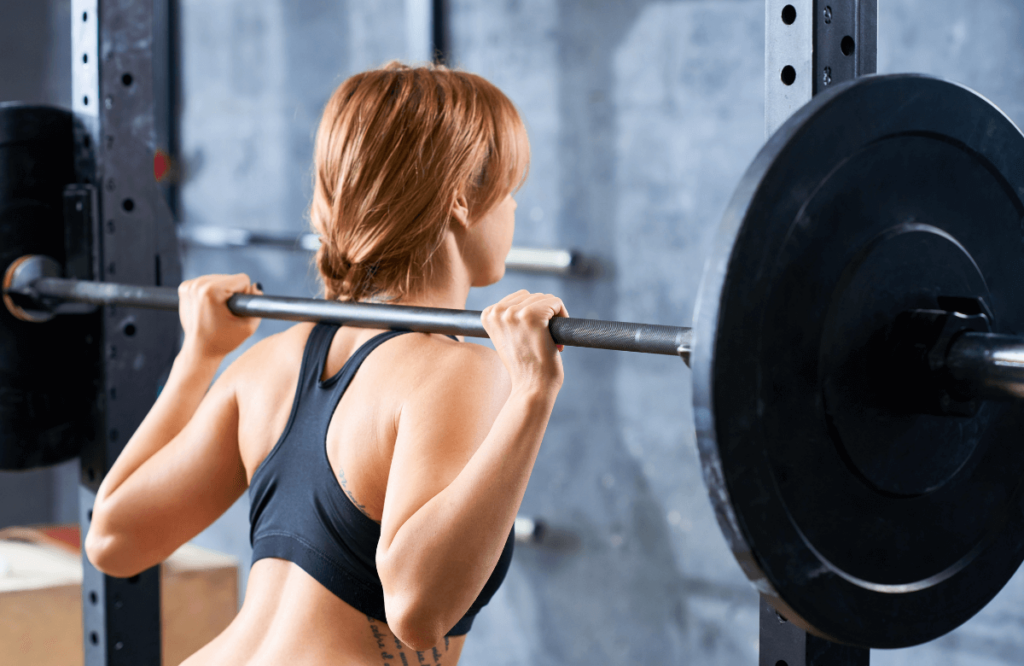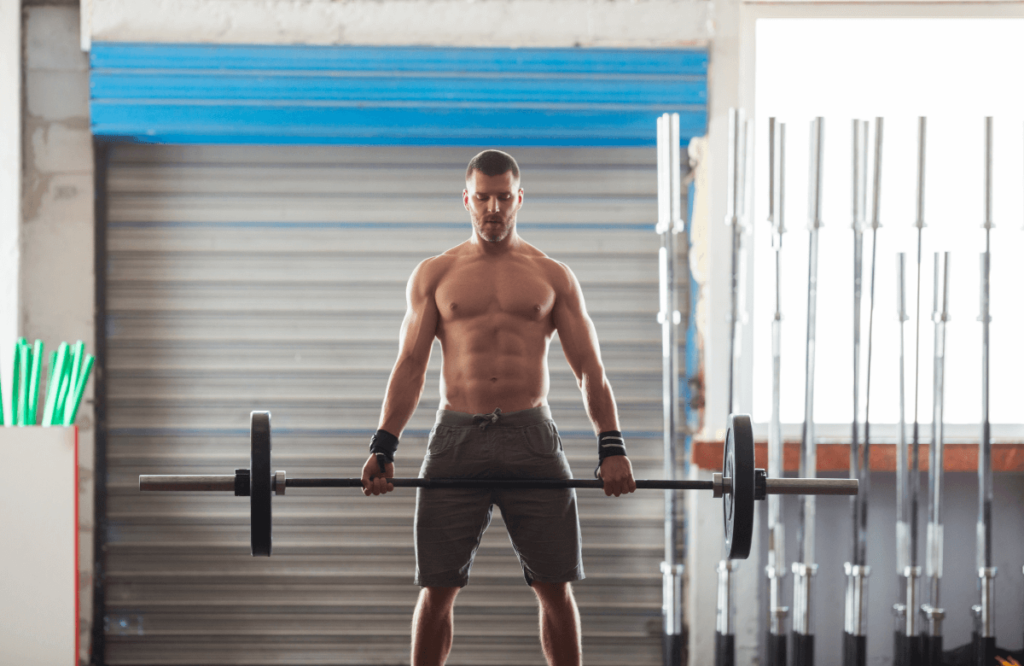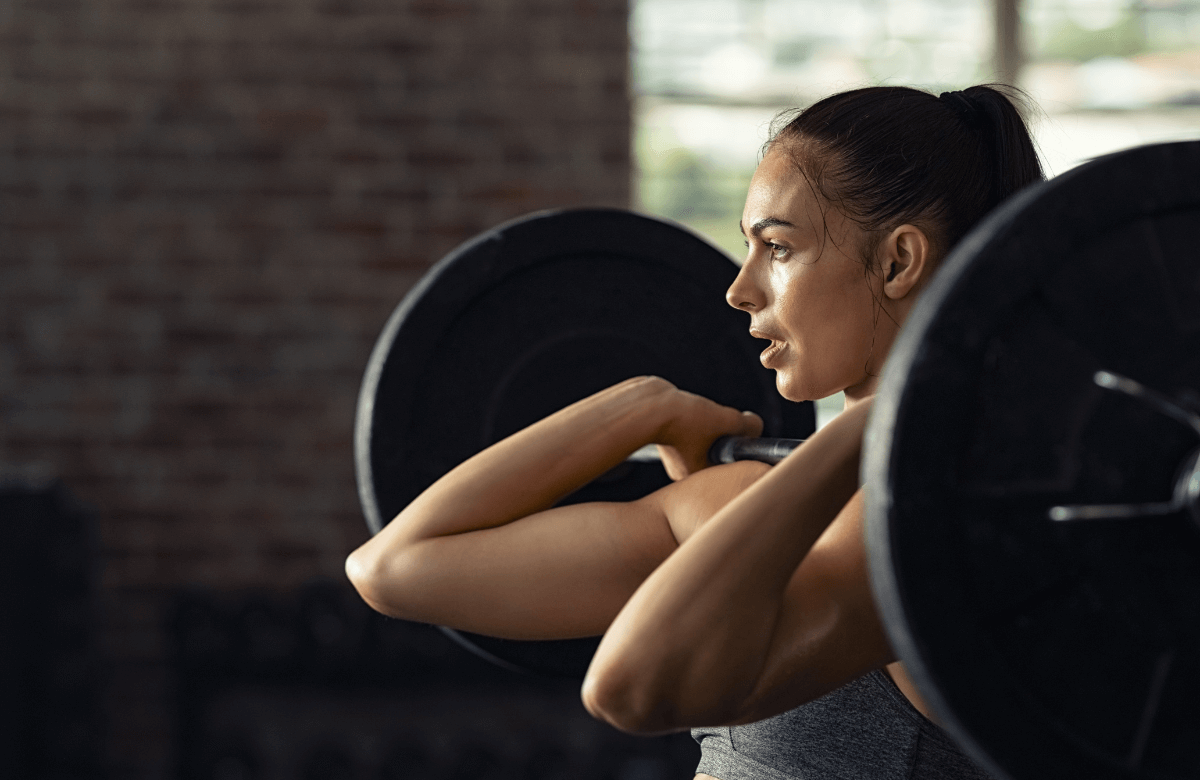Good mornings and deadlifts are two compound exercises that work the posterior chain. The posterior chain muscles are a series of muscles including the hamstrings, glutes, and mid and lower back.
Despite the similarities of the muscles they target, they are performed differently and have different benefits and uses in a strength training program.
In this article we’re going to compare which exercise between good mornings vs deadlifts is the best for you, examining their strengths and weaknesses. We’ll look at the sports science around both exercises, and make informed judgements on the best use for each exercise.
You’ll leave the piece knowing the winner of the good morning vs deadlift discussion…
Jump to:
What’s a Good Morning?
A good morning is a hip hinge exercise, where the starting position involves the barbell resting on the upper back, like a squat. The movement is initiated by flexing the hips, which pushes them back. The torso then moves through a full range of motion, until the torso is parallel with the floor.

The muscles of the back, glutes and hamstrings control the weight and dictate the tempo of the exercise.
The hamstrings are eccentrically loaded through the exercise, making it a unique and effective way of training them.
Good Morning Technique
A good morning is a compound exercise that targets the hamstrings, glutes, and lower back.
It is performed by standing with the feet shoulder-width apart and the barbell across the upper back, just below the neck. The bar should be in a straight line from the shoulders to the hips. The hips are then flexed, lowering the torso until the upper back is parallel to the floor.
The torso is then raised back to the starting position, with the movement started by bringing the hips forward.
Form:
- Keep the back straight throughout the entire movement.
- Do not round the back or arch the lower back.
- Keep the shoulders down and relaxed.
- Keep the core engaged throughout the entire movement.
Load:
- The injury risk is high for people with a vulnerable back here, so use a weight that is challenging but allows you to maintain good form.
- Start with a light weight and gradually increase the weight as you get stronger. Keep your core muscles activated throughout to protect your back.
What’s a Deadlift?
A deadlift is a compound exercise that targets the same posterior chain muscles – hamstrings, glutes, lower back, and upper back.

It is performed by starting with the barbell on the floor, with the feet shoulder-width apart and the shins touching the bar. The legs drive up and the back engages, lifting the bar up to thigh height. The hips are then extended until the body is fully upright. The bar is then lowered back to the starting position.
It’s a perfect exercise for lifting heavier weights, stimulating muscle growth and strength gains.
Deadlift Technique
Form:
- Keep the back straight throughout the entire movement.
- Do not round the back or arch the lower back.
- Keep the shoulders down and relaxed.
- Keep the core engaged throughout the entire movement.
- Push the hips through at the top of the movement to lockout the lift.
Load:
- Performed properly (and after a good warm up), deadlifts are a perfect hip hinge movement that allows you to lift heavy loads.
- Ensure proper technique when performing deadlifts, because any exercise performed poorly carries a risk of injury.
Similarities between good mornings and deadlifts
The two exercises are hip hinge movements. The muscle activation patterns are similar thanks to the hip movement, and they’re both an excellent exercise for improving functional posterior chain movement.
The primary movement from both exercises comes from flexion and extension of the hips and lower back. When they’re performed properly, they’ll both strengthen the lower back, glutes and hamstrings and they both require a strong and neutral spine.
It’s important for both lifts that you keep your core tight to protect the potentially vulnerable lower back.
Differences between good mornings and deadlifts
The deadlift is often seen as the best compound lift of all. Thanks to the technique and the activation of so many major muscles, it’s one of the best ways to lift heavier loads.
The barbell position, the muscle activation patterns and the recruitment of both the upper body and lower body means that the deadlift has a deserved reputation as one of the best compound movements. Building deadlift strength translates into amazing benefits for sports performance and general fitness.
Good mornings are somewhat different.
A good morning isn’t a great way to lift heavy – in fact according to research from 2015 titled ‘Effects of load on good morning kinematics and EMG activity’, increasing the load actually negatively impacts technique. The researchers found that…
‘Knee flexion increased with load on all trials. Estimated hamstring length decreased with load.’
This is an issue, because one of the major benefits of Good Mornings is the eccentric hamstring loading. The greater the lengthening of the hamstrings (within reason), the bigger and better the benefits from the exercise.
Good mornings don’t recruit the legs anywhere near as much as regular deadlifts, but they target the hamstrings more. They’re a good way to get a lot of benefit from lighter weights.

Are Good Mornings Better than Deadlifts?
The answer to this question depends on the training goals you have.
If you mean are Good Mornings better than conventional deadlifts for building muscle size, performing full-body exercise and lifting a heavy weight, then no. They’re not.
If however you want to target the hamstrings in particular, or you want to enjoy the tremendous benefit of lighter loads, then the Good Morning exercise is better than deadlifts. They also help you to build hamstring flexibility because they lengthen the muscles under load.
In summary, Good mornings and deadlifts are both effective exercises for building strength and muscle mass in the posterior chain. However, deadlifts are generally considered to be a better exercise overall. Deadlifts work more muscle groups than good mornings, and they are also a more functional movement.
Are Good Mornings helpful for improving your Deadlifts?
Good mornings can be a good accessory exercise for deadlifts, but they should not be used as a replacement for deadlifts.
Good mornings can help to strengthen the hamstrings and glutes, which can help to improve deadlift performance. However, good mornings do not work the upper back as much as deadlifts, so they should not be used as a substitute for deadlifts.
Accessory exercise training should focus on improving elements of the compound lift, rather than act as a substitute for it.
Are good mornings better than RDLs?
Good mornings and Romanian deadlifts (RDLs) are both effective exercises for working the hamstrings and glutes. However, they are performed differently and have different benefits.
Just like with the conventional deadlifts, you shouldn’t be looking to replace the Romanian deadlifts with Good mornings. They’re not the same thing, and they have different benefits. The Romanian deadlifts are better than Good mornings when it comes to heavy weight training of the posterior chain, and they also benefit the upper back muscles more.
Although they’re both great exercises, I think the Romanian deadlift is a better exercise than Good mornings for hitting the hamstrings and lower back with a heavy weight. If you wanted to focus on lengthening the hamstrings under tension, then the Good morning would be a better choice.

When and why should you perform good mornings?
Good mornings can be performed as part of a strength training program, or as a standalone exercise. They are best performed on days when you are working the hamstrings and glutes, because they naturally compliment the other exercises for these body parts.
Given they’re not the best way to lift a very heavy weight, I like to program Good Mornings as a warm up or accessory exercise to a heavier hinge movement. These could be deadlifts, Romanian deadlift, stiff legged deadlift or other barbell exercises such as cleans.
Good mornings can be an effective way to:
- Build strength and flexibility in the hamstrings and glutes.
- Improve deadlift performance.
- Correct muscle imbalances in the lower back and hamstrings.
- Train eccentric loading in the posterior chain.
- Provide a new stimulus to the muscles of the back and core.
Given the inherent vulnerability of the lower back and hamstrings in some people, it’s always a good idea to spend a lot of time warming up the lower back and movement pattern properly.
Which one is better for strength?
There’s no doubt at all here. Heavy deadlifts are one of the key movements for building strength. The absolute strength development capability of the deadlift is unrivaled.
Deadlifts are a much better exercise for strength than Good Mornings. This is because deadlifts work more muscle groups than Good Mornings, and they are also a more functional movement. Even if you perform a heavy Good Morning, you won’t build as much strength as you would with a deadlift.
Can good mornings replace deadlifts?
No, good mornings cannot replace deadlifts. Deadlifts are a more effective exercise for building strength and muscle mass in the posterior chain. However, good mornings can be an effective accessory exercise for deadlifts.

Good mornings vs deadlift – which one wins?
Good mornings and deadlifts are both effective exercises for building strength and muscle mass in the posterior chain.
However, deadlifts are generally considered to be a better exercise overall.
Deadlifts build strength, offer functional fitness benefits, don’t stress the back as much and offer more versatility and variety. Good Morning is a good exercise, but it won’t build as much strength as deadlifts.
In their favor, Good Mornings have a much more targeted result – they place a lot of emphasis on the hamstrings and they eccentrically load them more effectively than a standard conventional deadlift.
Given the choice between the two though, I would opt for deadlift and its variants ahead of the Good Morning.














